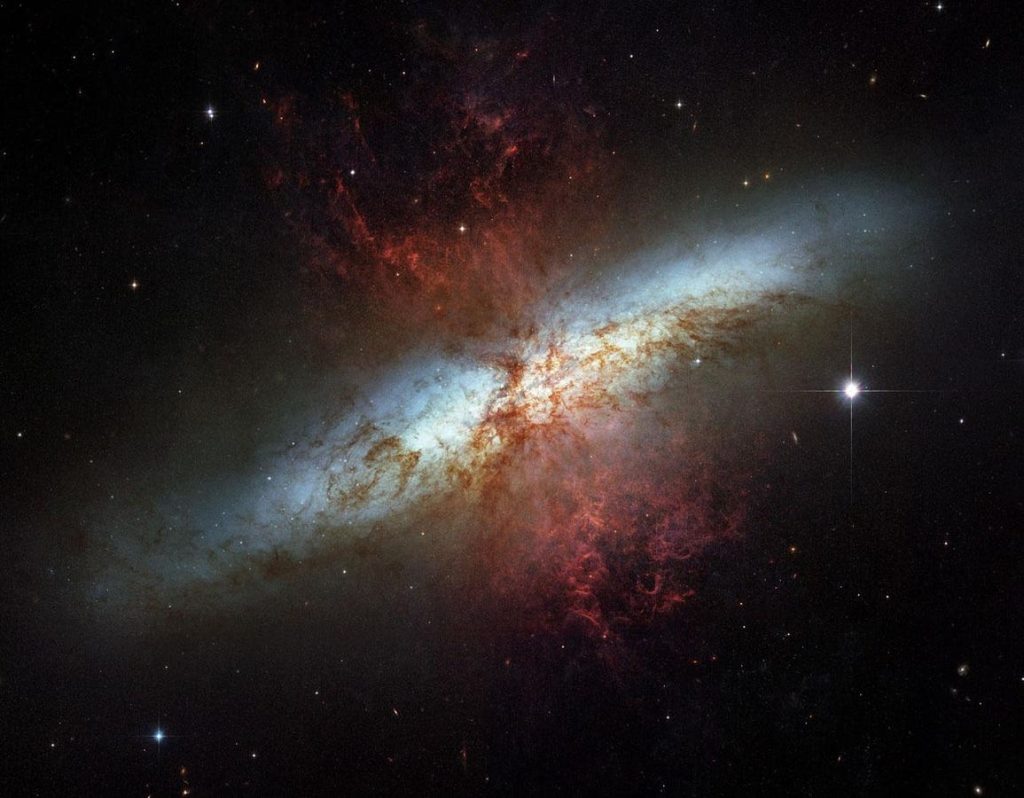Astronomers have recently detected a brief burst of gamma rays in the distant galaxy M82, also known as the Cigar Galaxy. This burst is believed to have come from an extreme star with a powerful magnetic field known as a magnetar. Neutron stars, which are the remaining core of a collapsed star after a supernova explosion, are thought to be the source of these mysterious gamma-ray bursts.
The frequency of these gamma-ray bursts and their distance from Earth could potentially help scientists better understand the rate at which the universe is expanding. The particular burst detected in M82 is significant because it is relatively close to our Milky Way galaxy, only 12 million light-years away. This makes it a neighbor in cosmic terms, allowing astronomers to study it in more detail.
The magnetar in M82 was discovered by the European Space Agency’s Integral orbiting observatory in November 2023. This finding was considered a special alert, as gamma-ray bursts usually come from distant locations in the sky. The proximity of this burst allowed astronomers to study it in more detail using the XMM-Newton space telescope, which did not detect the typical afterglow associated with short gamma-ray bursts.
Magnetars are neutron stars with incredibly strong magnetic fields, over 10,000 times more powerful than typical neutron stars. These stars emit energy through flares, with occasional gigantic flares like the one detected in M82. This was only the fourth flare ever detected, and the first from a magnetar outside of the Milky Way. The discovery opens up the possibility of finding more extra-galactic magnetars to better understand these phenomena.
M82 is a starburst galaxy with a high rate of star formation, located northwest of the star Dubhe in the Big Dipper constellation. Its stars can be seen as small, diffuse patches of light in the sky, making it an easily observable target for amateur astronomers with backyard telescopes. This discovery adds to our understanding of extreme astrophysical events and the potential for further exploration into the mysteries of the universe.
Overall, the detection of this extra-galactic magnetar in M82 represents a significant advancement in our understanding of these extreme astrophysical events. The study of magnetars and their powerful magnetic fields can provide valuable insights into the processes of star formation, energy emission, and the expansion of the universe. With further observations and discoveries, astronomers hope to uncover more about the nature of these mysterious objects and their impact on the cosmos.













